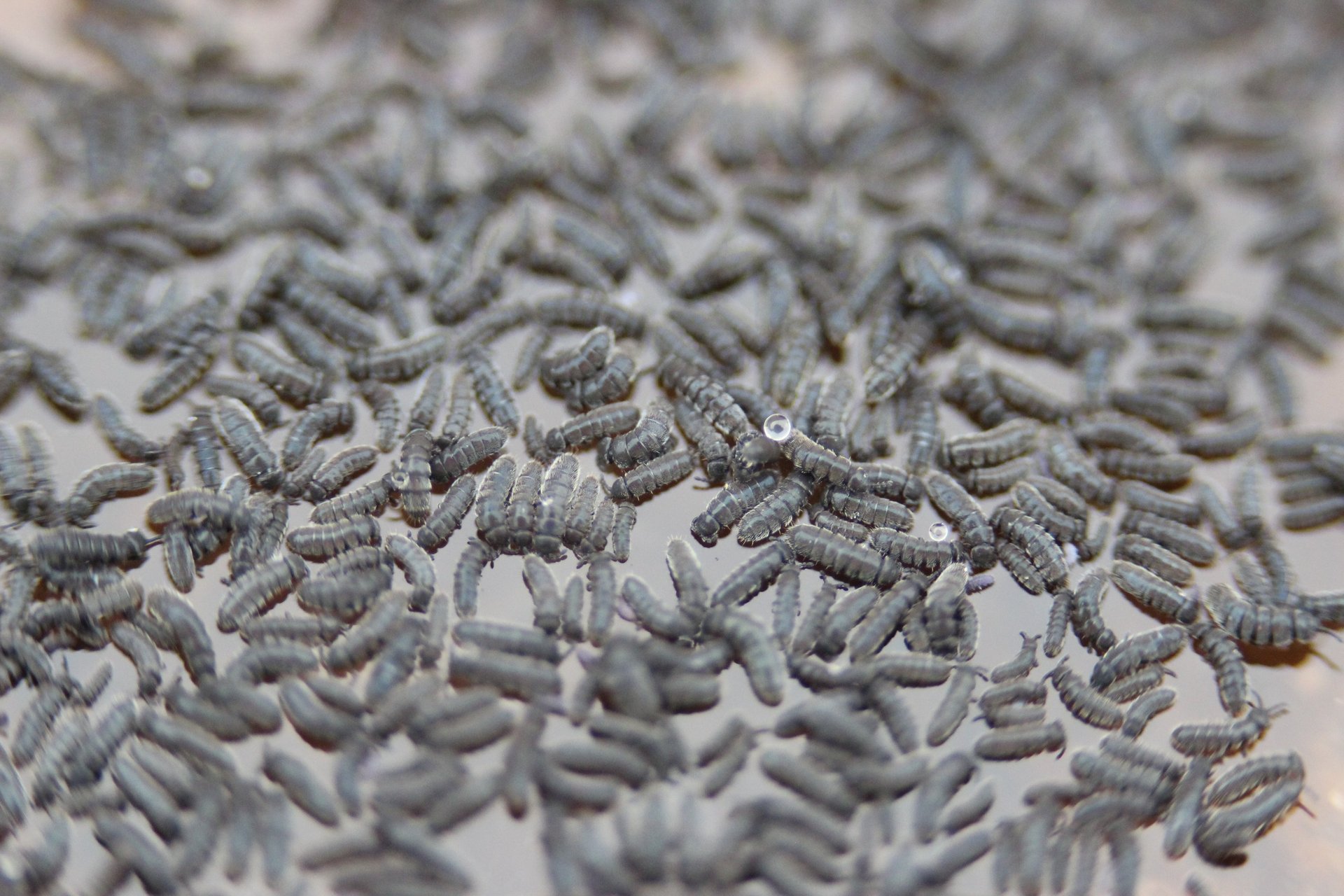
Animals
Animals on land
When talking about Antarctic animals, the focus first lies on the enigmatic species such as, penguins, whales and seals. However, these animals are for a large extent dependent on, or live completely in the ocean. Animals that complete their full life cycle on land and are dependent on the food that is available on land is restricted to small arthropods that thrive in and among the Antarctic plant life.
Land animals on Antarctica are represented by five main groups springtails, mites, nematodes, tardigrades and protozoa.
Biodiversity in Antarctica

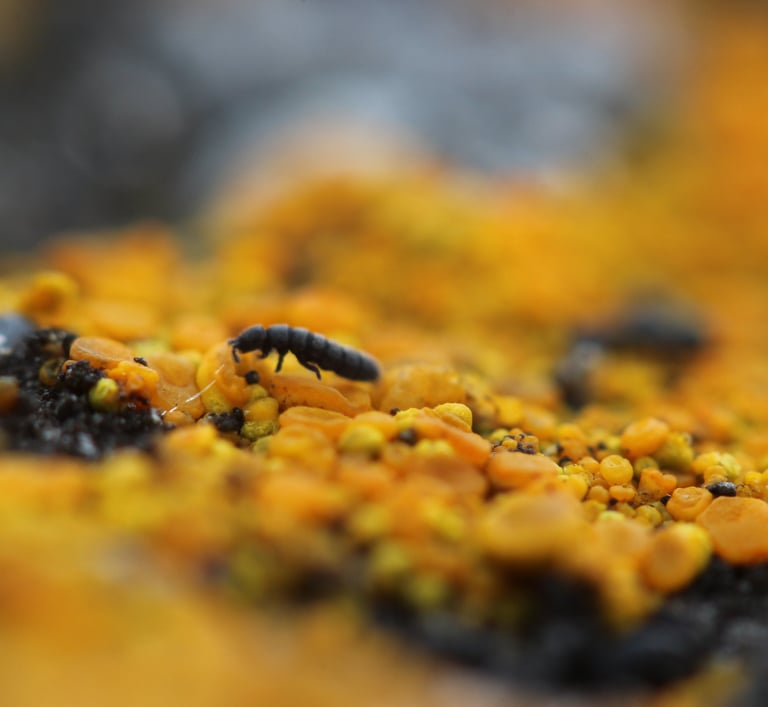


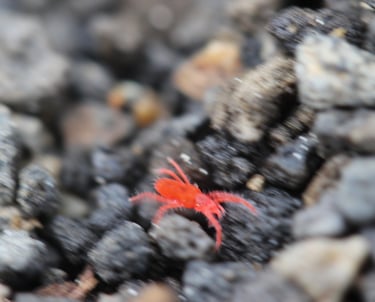
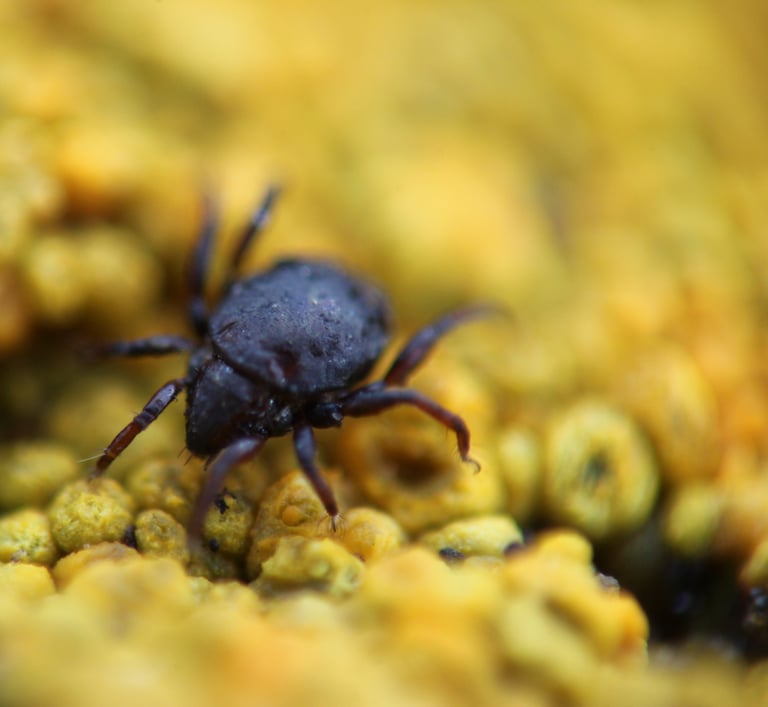

Springtails
Springtails (Collembola) are small organisms of 1-2 mm in length, they have 3 pairs of legs (as typical for insects) but no wings and feed on algae, bacteria, fungi and decomposing mosses and lichens. Springtails are amongst the most numerous of Antarctica’s animals, with populations sizes reaching up to 1 million individuals per square meter.
Currently about 10 springtail species are known from the Maritime Antarctic (in comparison, worldwide about 8000 species have been identified). But more species will likely emerge through advanced molecular techniques, as classical morphological studies cannot always identify novel species.
Antarctica’s’ springtails thrive best in wet environments, as can be found among mosses and between rocks, as they easily loose water through evaporation and may dry out. Highest abundances of springtails are found among moss vegetation and with mat forming algae (Prasiola crispa), which is part of its diet as well as providing good refuge.
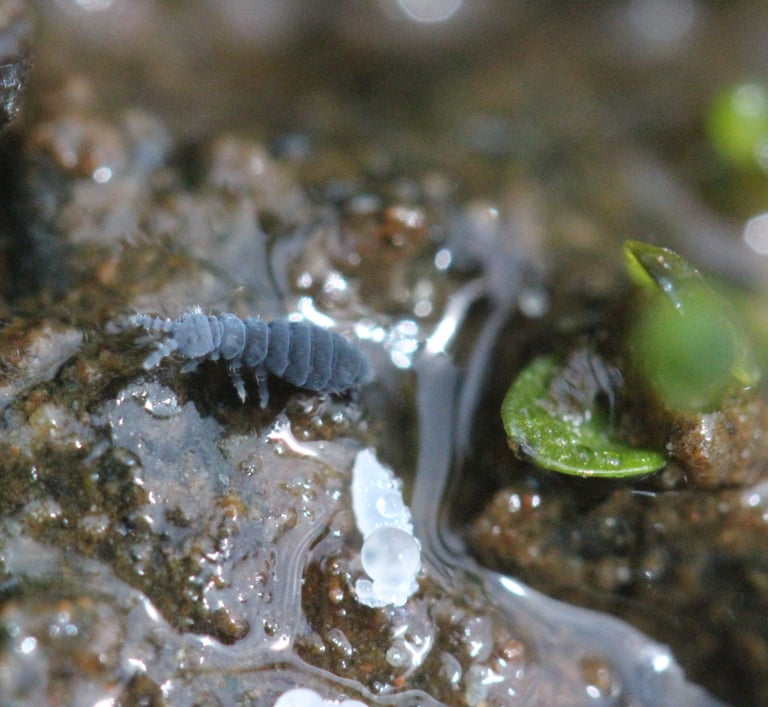


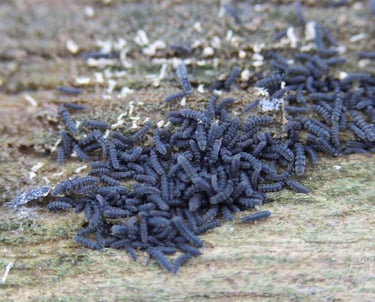
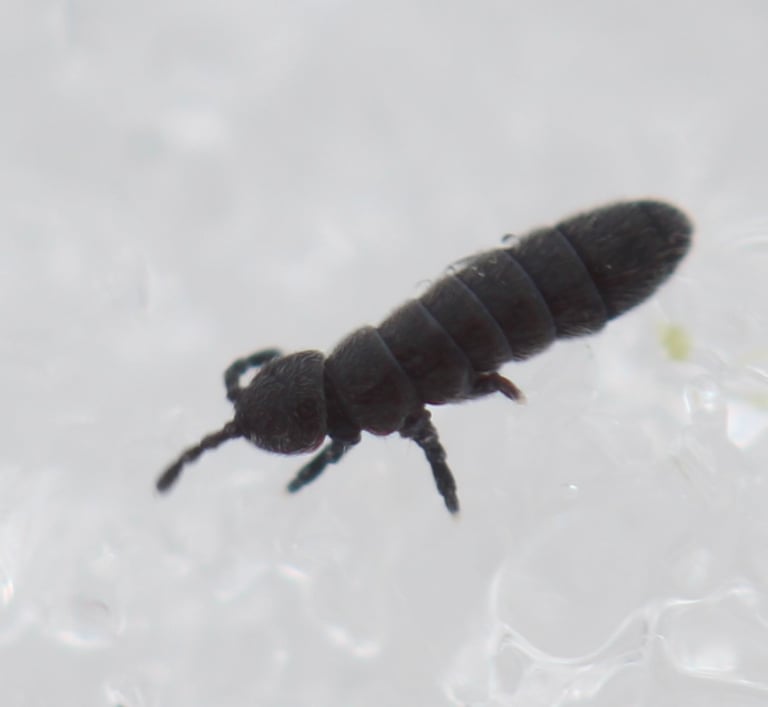

The springtail Cryptopygus antarcticus among snow crystals
Springtail (Cryptopygus antarcticus) aggregation

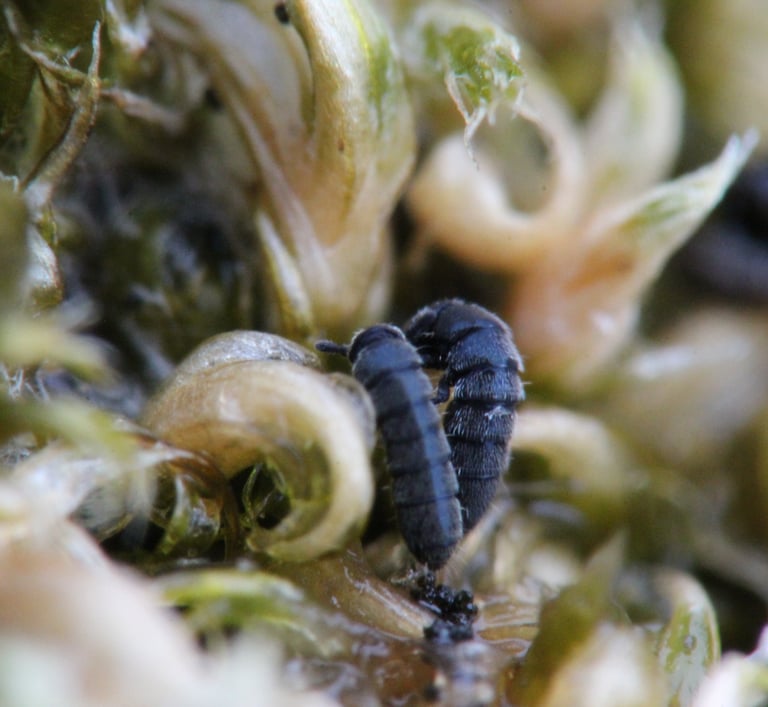

Springtails (Cryptopygus antarcticus) exploring moss shoots
The springtail Friesea antarctica among soil and vegetation on South Georgia
Mites
Mites (Acari) are small animals (0.5-3 mm long) that belong to the group of spider like organisms, and have 4 pairs of legs. Some mites are predatory, and prey on springtails, nematodes and other smaller mites, whereas other mites feed on decaying moss and lichen material as well as fungi and decaying birds and beached sea animals. Mites have a harder outer skin than springtails and do not loose water as rapidly as the latter, and therefore can withstand dry conditions better. Mite populations are often more numerous among lichens.
Currently about 35 mites are known from Antarctica with species richness declining further south.
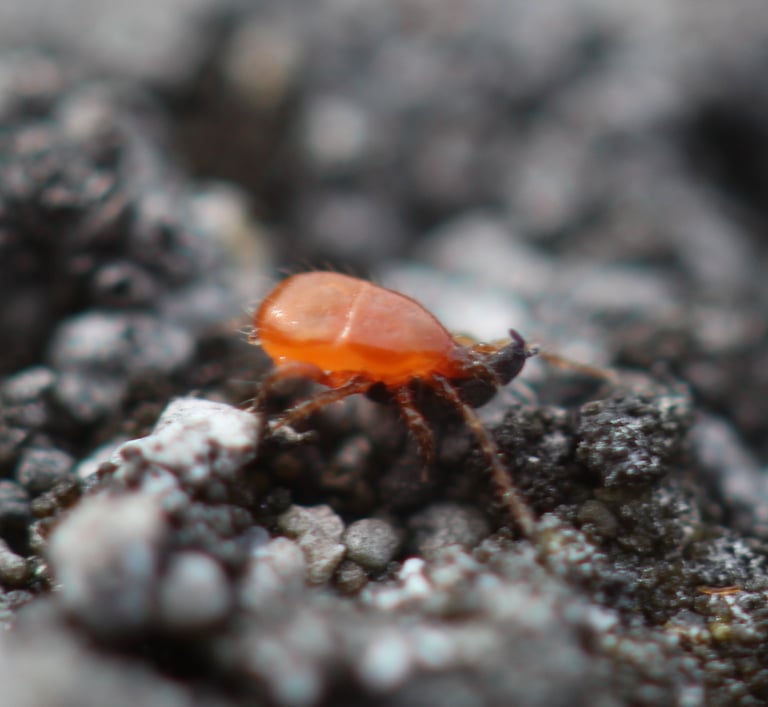

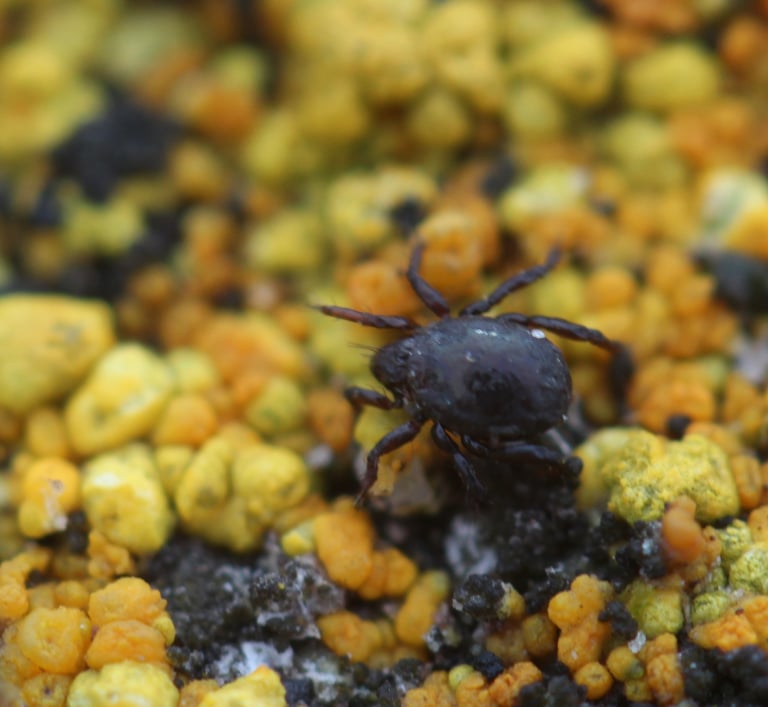

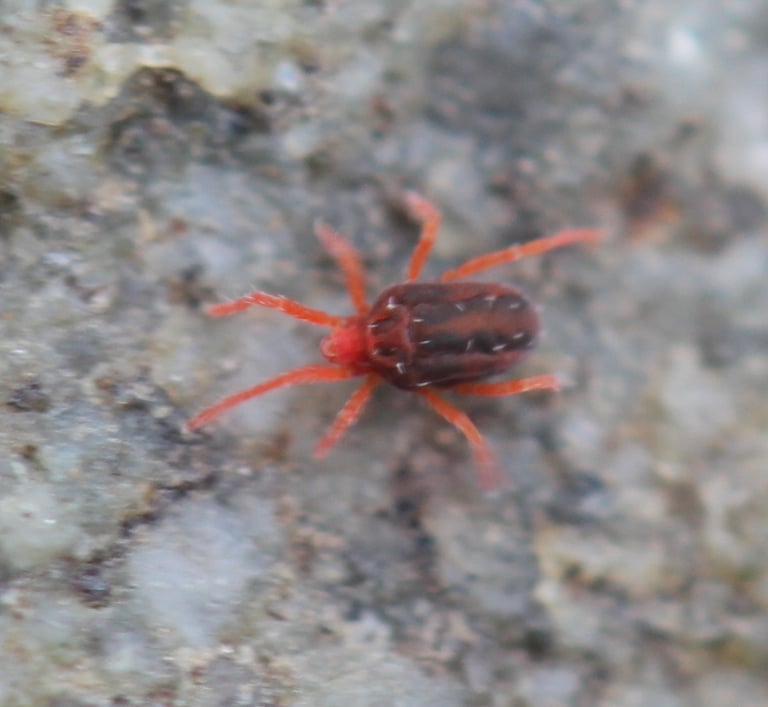

The predatory mite Gamasellus racovitzai with a fresh kill (Cryptopygus antarcticus)
The 'moss' mite Alaskozetes antarcticus among yellow lichen
Stereotydeus villosus
Nematodes
Nematodes are small (0.1 – 2.5 mm long) worm like organisms that thrive in soil and organic matter where they consume dead plant material or prey on bacteria, fungi or other organisms. Nematodes form a crucial link in soil nutrient cycling. Nematodes can be found virtually everywhere on Antarctica where this is some organic matter available, but thrive best under wet conditions, and their abundance is higher among mosses than lichens. Antarctica nematodes are well adapted to survive deep freezing and dehydration through physiological adaptations and can sustain such dormancy for long periods. Currently about 50 nematode species have been recorded in Antarctica but many more can be expected (25000 nematode species are known across the world but it is estimated that species numbers may be up to several millions).
Tardigrades
Tardigrades (water bears or moss piglets) are a group of very tiny (0.5 mm long) organisms with 4 pairs of legs. Tardigrades share a common ancestor with arthropods, the group that comprises springtails and mites, or nematodes. Tardigrades thrive best in wet environments, such as Antarctic mosses where they feed on micro-organisms or graze dead organic material. Tardigrades are well known for their hardiness as they can withstand extreme cold and heat and even survive in outer space.
Currently about 46 species are known from the Maritime Antarctic region
Other groups
There are a number of additional animal groups in terrestrial Antarctica, such as: Protozoa, Rotifera, Platyhelminthes (flatworms), Gastrotricha, Annelida, Mallophaga (lice that thrive on birds), Diptera (2 flightless flies), with some restricted to freshwater lakes and river systems or primarily thrive on sub-Antarctic island. The sub-Antarctic islands support a richer diversity of life due to less environmental constraints on life and being closer to other continents.
Impact of large wildlife on terrestrial ecosystems

Want to know more...
A selection of resources on Antarctic terrestrial animals
Elshishka, M., Mladenov, A., Lazarova, S. and Peneva, V. 2023. Terrestrial nematodes from the Maritime Antarctic. Biodiversity Data Journal, 11.
Velasco-Castrillón, A., Gibson, J. E. and Stevens, M. 2014. A review of current Antarctic limno-terrestrial microfauna. Polar Biology, 37, 1517-1531.
Thompson, A. R. 2021. Phagotrophic protists (protozoa) in Antarctic terrestrial ecosystems: diversity, distribution, ecology, and best research practices. Polar Biology, 44, 1467-1484.
Convey, P. and Biersma, E. M. (2024). Antarctic Ecosystems. Encyclopedia of Biodiversity S. S.M. Oxford, Elsevier. 1: 133-148.
Many of the above documents are freely available from the publisher websites, but if not, please feel free to reach out to the authors for a copy